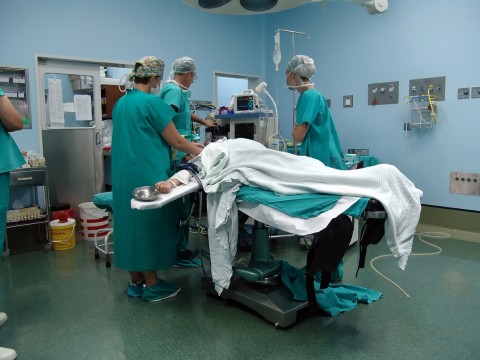Seeing the crucified Christ in my wife’s C-section
I see love incarnate in suffering flesh, a body bearing a body in pain for love.

She lies on a cross. My wife is preparing to give birth to our daughter. It’s our fourth child, her fourth time on the instrument. She does not hang on it. She is lying down, strapped to it, her arms outstretched. Her body is pierced; from her side, intermingled fluids drip and flow, the wounds and substance of a mother’s love. Her body, unable to progress in natural childbirth, is subjected to—she willingly subjects it to—a scalpel. Her hand and back and abdomen are stuck, cut, torn, and sewn back together. She will bear these scars for the rest of her life, scars both visible and invisible, within the body and without.
For my wife, each conception means not only 40 weeks of bodily change, sustained episodes of nausea, increasing discomfort, and endless exhaustion. It means the knowledge that the scalpel is coming: the operating room awaits. She knows this. She foresees it, and nonetheless she welcomes the creation of new life inside her womb. She praises God when it comes. With thanksgiving she sets out on the way of pain, her own personal path of suffering. For the joy set before her, she begins the journey whose only end is a cross.
What can a husband do during those weeks and months? What can he do in the crowd of witnesses gathered around that cruciform body?





